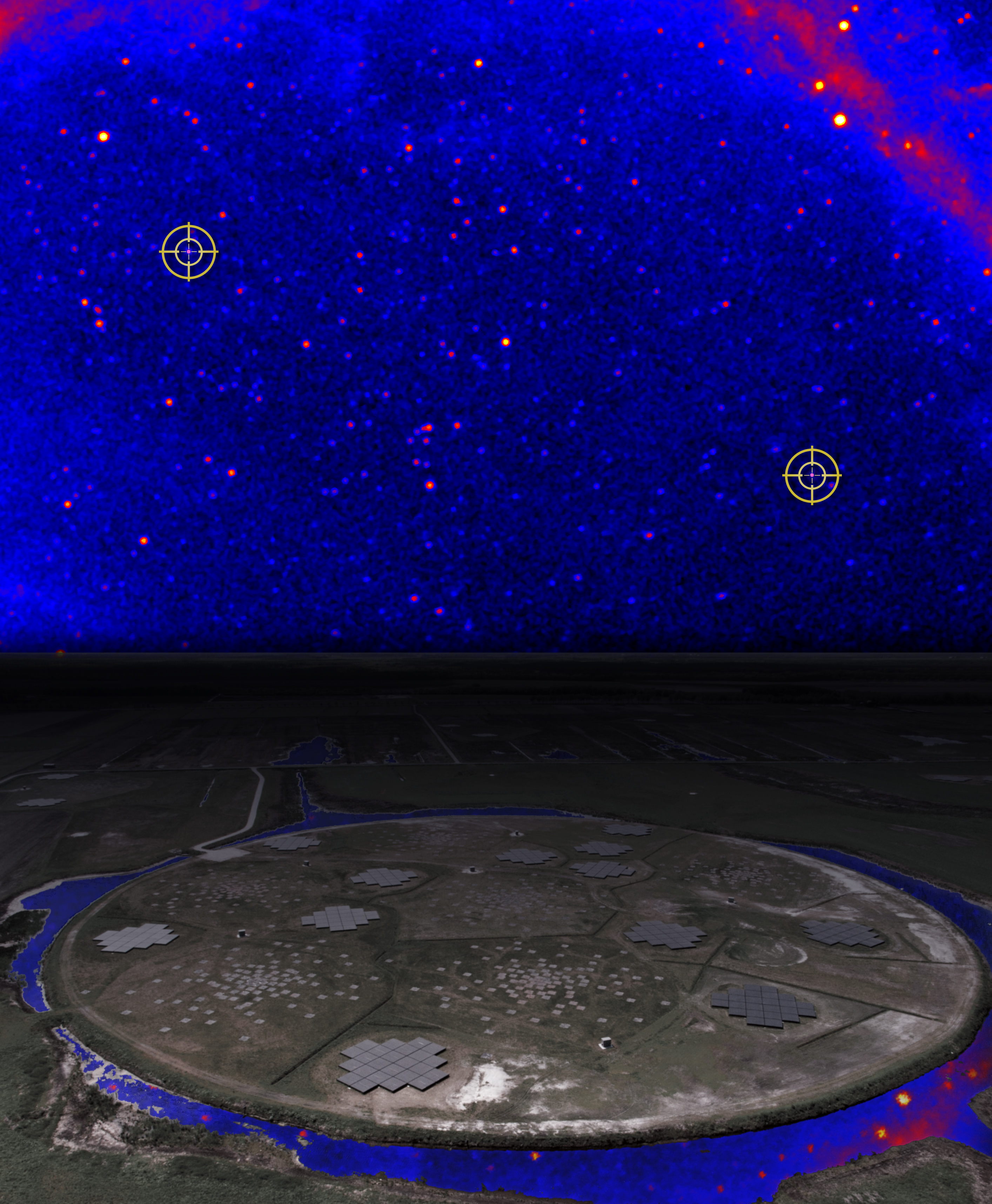
High and LO
 Credit: NASA/DOE/Fermi LAT Collaboration and ASTRON
Credit: NASA/DOE/Fermi LAT Collaboration and ASTRON
In 9 years of scanning the sky (obtaining one complete observation roughly every 3 hours), the Fermi Gamma-ray Space Telescope has observed weird and wonderful objects and events: giant superbubbles around the Milky Way; a spinning high-energy neutron star in another galaxy; powerful outbursts from supermassive black holes, and exploding massive stars and merging neutron star binaries. But some of the most wonderful things Fermi has found may be the sources that Fermi detected which have yet to be identified with some known astronomical object. About one-third of the Fermi Gamma-ray sources detected are as yet unidentified. Perhaps some of these mysterious sources represent entirely new classes of objects, or obey entirely new laws of physics. Many observing campaigns, using both ground- and space-based observatories, have been organized over the years to help uncover the true nature of these sources. The image above shows the Fermi view of the Gamma-ray sky above the Netherlands, with the Low-Frequency Array (LOFAR, a network of powerful radio telescopes located mostly in the Netherlands near Exloo) in the foreground. LOFAR has now identified two previously unidentified high-energy Gamma-ray sources detected by Fermi, by observing the low-energy radio radiation they emit. These two newly-identified sources are highlighted by the bulls-eyes in the Gamma-ray image. The LOFAR observations show that both sources are pulsars, rapidly spinning neutron stars. The rightmost source spins at an incredible rate of 707 revolutions per second, making it the second-most rapidly spinning neutron star. The source on the left is also a pulsar, spinning at "only" 412 revolutions per second. What else is out there?
Published: September 11, 2017
<
HEA Dictionary ● Archive
● Search HEAPOW
● Other Languages
● HEAPOW on Facebook
● Download all Images
● Education ● HEAD
>

Each week the HEASARC
brings you new, exciting and beautiful images from X-ray and Gamma ray
astronomy. Check back each week and be sure to check out the HEAPOW archive!
Page Author: Dr. Michael F. Corcoran
Last modified Monday, 26-Feb-2024 17:23:15 EST


